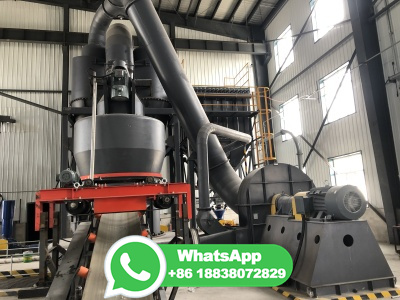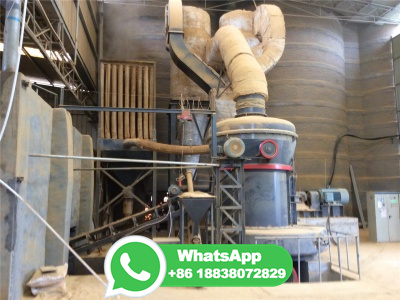
WEBMay 30, 2011 · 1. Introduction. As the world leader in alumina production, China's million tonnes comprised nearly onethird of the global alumina output of million tonnes in 2009 [1].Bayer red mud (RM) is a solid waste produced during the process of extracting alumina from bauxite.
WhatsApp: +86 18203695377
WEBMar 30, 2023 · The Bayer process for alumina production generates more than 160 million tons of bauxite residue annually. The current global stockpiles of bauxite residue have reached more than 4 billion tons with less than 2% annual recycling rate. Critical elements such as Sc and Y present an opportunity to explore bauxite residue as a secondary .
WhatsApp: +86 18203695377
WEBDec 1, 2010 · About 97% of all bauxite mined is used for the production of alumina by the Bayer process (Roskill, 2008). Recent analyses of bauxite deposits have confirmed that the most productive bauxite provinces are loed in the presentday tropical zone within ancient Gondwanan platforms ( Bogatyrev and Zhukov, 2009, Bogatyrev et al., 2009 ).
WhatsApp: +86 18203695377
WEBThe Bayer Process is the most commonly used method of obtaining alumina from bauxite, and is explored in detail here. The key input materials are the ores bauxite gibbsite, boehmite, or diaspore, caustic soda, and calcined lime. The global average consumption of these inputs is as follows: Raw Material. kg per tonne of alumina. .
WhatsApp: +86 18203695377
WEBThe industrial production process for alumina from bauxite was developed in 1887 by the chemist KarlJosef Bayer (portrait opposite). It is still used today thanks to important improvements made over time. The bauxite is crushed then mixed with soda at high temperature and under pressure.
WhatsApp: +86 18203695377
WEBAlumina Refining. Alumina is a white granular material, a little finer than table salt, and is properly called aluminium oxide. Aluminium does not occur as a metal but must first be refined from bauxite into alumina. Approximately two tonnes of alumina are required to produce one tonne of aluminium. Australia is the second largest producer of ...
WhatsApp: +86 18203695377
WEBJun 15, 2013 · The bauxite (alumina content ∼54–59 wt%) used as the raw material in the Bayer process for the synthesis of alumina was obtained from a mine at Weipa in Queensland, Australia. The bauxite ores were crushed to a particle size of <10 μm using an attrition mill. Table 1 lists the composition of bauxite supplied from the support company.
WhatsApp: +86 18203695377
WEBDi (2ethylhexyl) phosphoric acid (abbreviated as D2EHPA, commercially as P204), an available reagent, has been used in this work to investigate the extraction of gallium (III) and vanadium (IV) from sulfaric acid solution by the presence of various other metals, such as aluminium (III). The different parameters affecting the extraction of gallium (III) and .
WhatsApp: +86 18203695377
WEBJul 20, 2021 · Lithium is one of the secondary mineral elements occurring in bauxite, where lithium content can reach up to % (as Li 2 O) [1,2,3].During the digestion process, lithium in bauxite is extracted into Bayer liquor, and in the following seed precipitation process, it coprecipitates with alumina hydroxide (ATH), resulting in high lithium .
WhatsApp: +86 18203695377
WEBFeb 5, 2021 · Because of its simple process, low production cost and high product quality, Bayer process is the principal industrial method of refining bauxite in the world, and even more than 95 % of alumina is produced by this process (Khairul et al., 2019). Consequently, the vast majority of solid waste generated in the alumina industry is .
WhatsApp: +86 18203695377
WEBJan 1, 2019 · Normally, all alumina used in the industry is manufactured via the Bayer process [6], where raw materials, namely bauxite, is dissolved by NaOH solutions to generate Al(OH) 3 . Therefore, small ...
WhatsApp: +86 18203695377
WEBDec 8, 2009 · Practically most of alumina produced commercially by bauxite is obtained via a process patented by Karl Josef Bayer in 1888. In the Bayer process, the aluminiumbearing minerals in bauxite – gibbsite, boehmite and diaspore – are selectively extracted from the insoluble components (mostly oxides) by dissolving them in a solution of .
WhatsApp: +86 18203695377
WEBJul 3, 2023 · 1) Purifiion of bauxite. 2) Electrolysis of alumina. 1) Purifiion of Bauxite. The purifiion of bauxite ore can be done by Baeyer's process. a) The powdered bauxite ore is treated with hot concentrated (45%) solution of sodium hydroxide at 473523 K and 35 36 bar pressure. b) In this process, alumina (Al 2 O 3) dissolves .
WhatsApp: +86 18203695377
WEBApr 1, 2023 · Notably, adding lime to the Bayer process of gibbsitic bauxite digestion could promote the conversion of goethite and Algoethite, but it also led to additional alumina loss owing to the production of hydrated garnet and significantly increased the amount of red mud. Consequently, the ironmineral enrichment in red mud was reduced.
WhatsApp: +86 18203695377
WEBDec 10, 2013 · The Bayer process used for refining bauxite to smelting grade alumina serves as the linchpin of the Aluminum production industry worldwide. Even though the process is well established, the presence of impurities in the liquor affects the quality of product and imposes a major economic cost on the industry.
WhatsApp: +86 18203695377
WEBThe discussion of alumina quality will be relevant to people on the smelter side, as this is the interface between refinery and smelter. Emphasis is placed on the major steps of the Bayer Process including: digestion, clarifiion, precipitation, calcination, and management of water, energy, and bauxite residue.
WhatsApp: +86 18203695377
WEBJun 15, 2023 · The alumina extraction and iron minerals' comprehensive utilization of technology that could replace the current Bayer process have not yet been formed. In the current Bayer digestion process, gibbsitic bauxite was digested at a temperature, alkali concentration, and time of 100–150 °C, 120–190 g/L, and 10–90 min, respectively.
WhatsApp: +86 18203695377
WEBApr 8, 2022 · The red mud (RM) is a solid waste product generated during a process for the production of alumina. The alumina industry produces around to tons of RM for every ton of alumina, depending on the type of bauxite used in the refining process (Reid et al. 2017).In 2020 alone, 135 million tons of alumina were produced throughout the .
WhatsApp: +86 18203695377
WEBBayer's process is used for the purifiion of bauxite Al 2 O 3 · 2 H 2 O. Aluminium is extracted by Bayer's process. The bauxite is powdered and mixed with a concentrated solution of caustic soda NaOH to give sodium meta aluminate and .
WhatsApp: +86 18203695377
WEBSep 15, 2006 · The process was developed (Fig. 1) and patented by Karl Josef Bayer 110 years ago and has become the cornerstone of the aluminium production industry worldwide. The bauxite used in the Bayer process is generally composed of 50% alumina (Al 2 O 3), 25% water and 25% of other constituents, mainly other mineral oxides and organic .
WhatsApp: +86 18203695377
WEBJun 30, 2023 · As the minerals are weathered they gradually breakdown into various forms of hydrated aluminum oxide, Al 2 O 3 .xH 2 O, known as bauxite. The bauxite is purified by the Bayer Process. First the ore is mixed with a hot concentrated solution of sodium hydroxide. The NaOH will dissolve the oxides of aluminum and silicon but not other .
WhatsApp: +86 18203695377